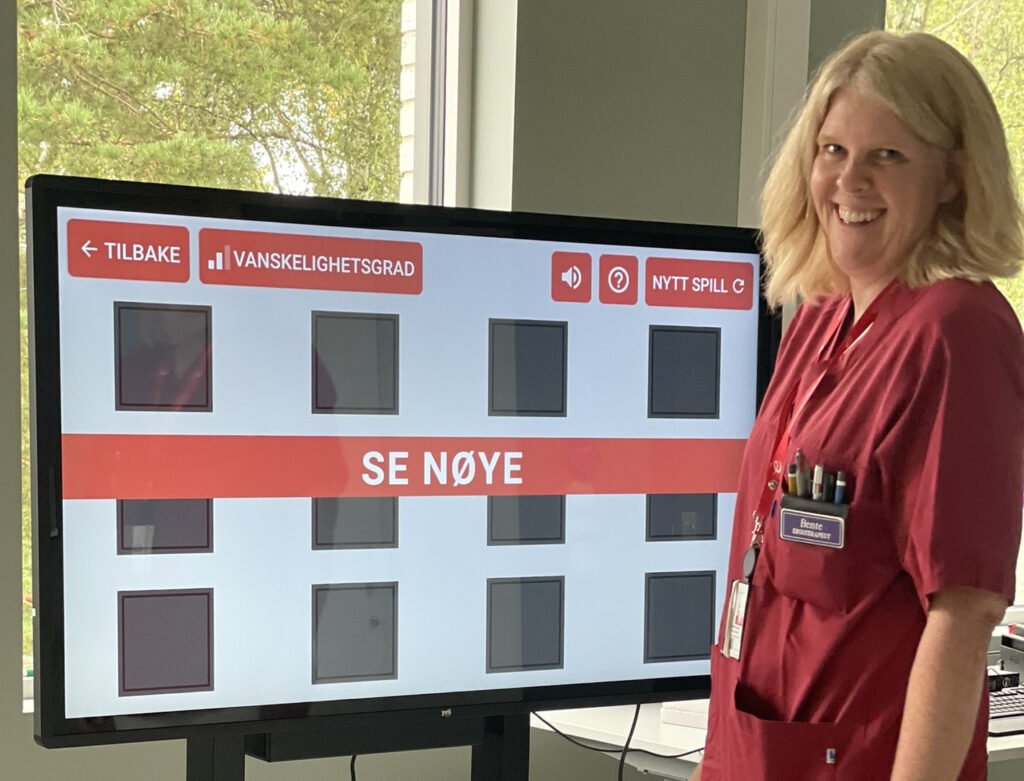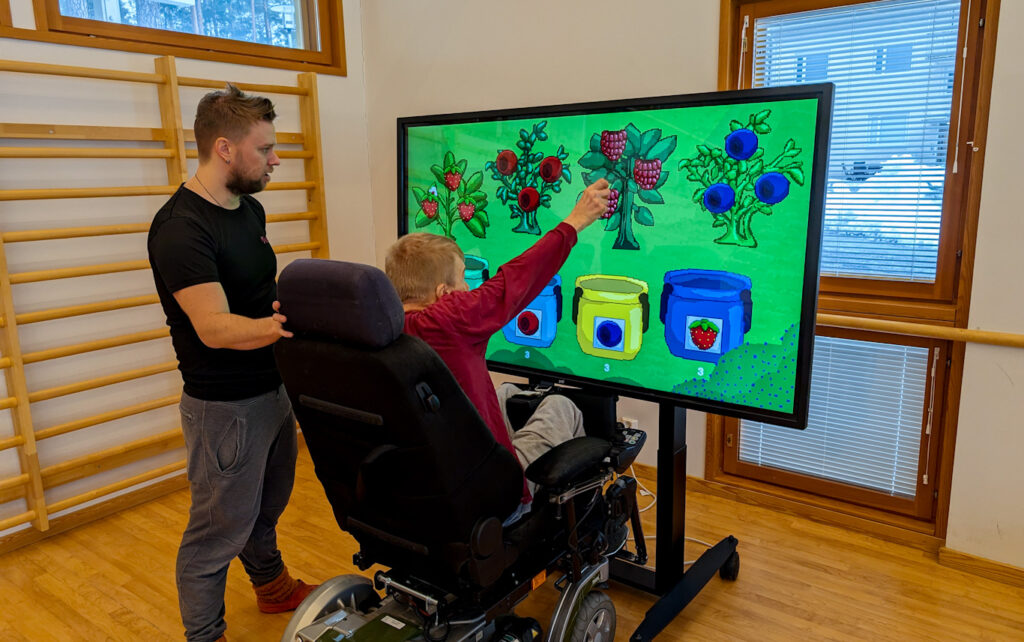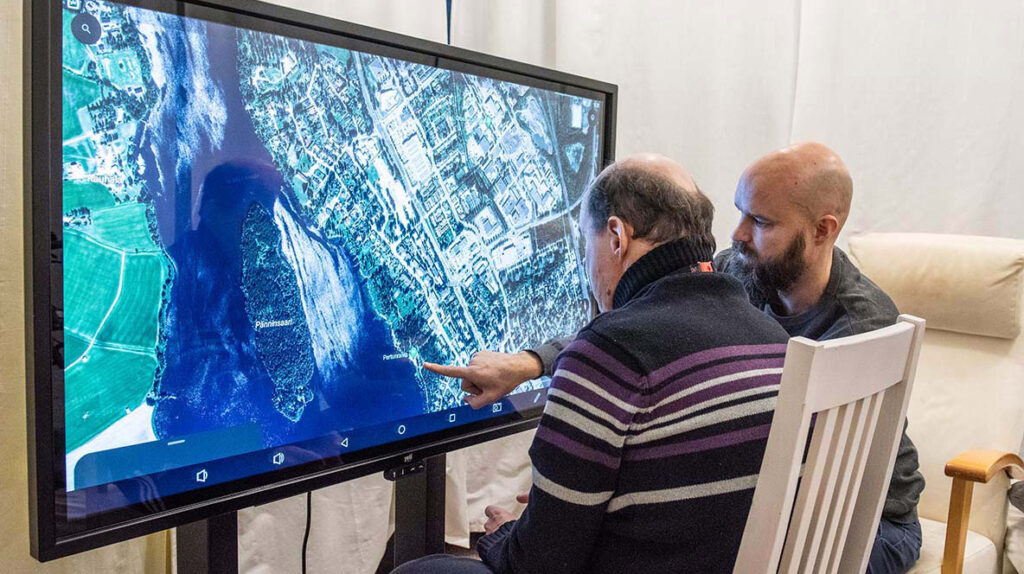Customer stories
Modern technology through joy – YetiCare’s success concept in rehabilitation
Customer stories
14.6.2024
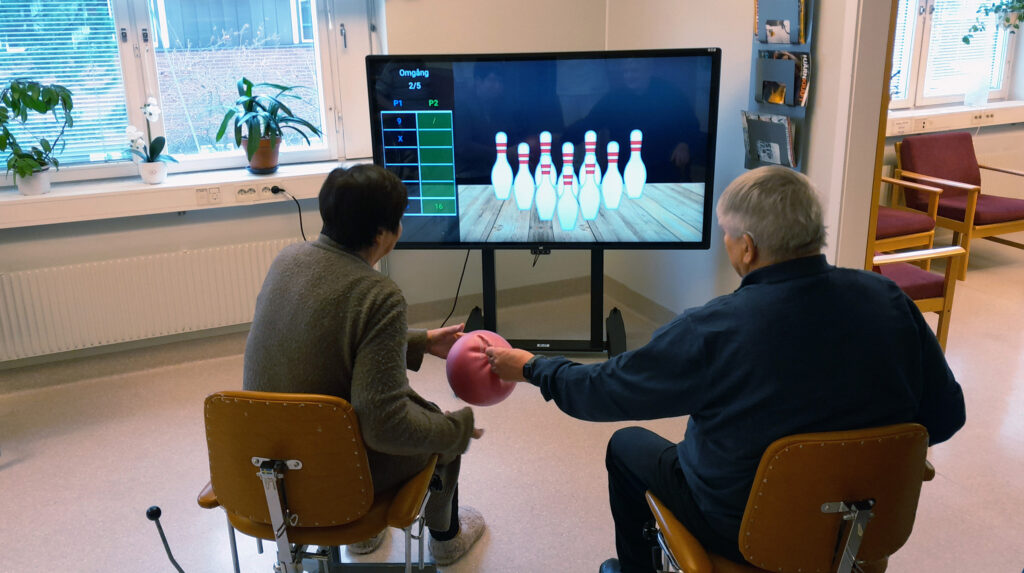
In outpatient rehabilitation at Kalix Hospital in Sweden, a new approach is being utilised, creating joy and feelings of success through technology. Cindy Laiho, a licensed occupational therapist at Kalix Hospital Rehabilitation Center, shares her experiences using YetiCare’s Yetitablet in her work and explains how the touch screen activity table has transformed the rehabilitation process.
Modern technology in the rehabilitation environment
Kalix Hospital’s outpatient rehabilitation offers an innovative environment where modern technology plays a central role. A multidisciplinary team, including physiotherapists, occupational therapists, therapists, and nurses collaborate to provide individualised rehabilitation. Rehabilitation is not exclusively based on physician referrals; patients can also request treatment themselves or receive treatment recommendations based on identified potential for improvement.
Cindy emphasises how Yetitablet with YetiCare, or “Yeti,” has improved their rehabilitation processes. YetiCare offers easy training for various skills, such as motor and cognitive skills. The adjustable stand and large screen make Yetitablet an excellent tool for rehabilitation as it can be tailored to individual needs.
Another team member, Lena, also highlights YetiCare as an essential part of their daily work in rehabilitation. Lena states that she can’t even remember how they managed before YetiCare.
“By motivating the patient to carefully examine the entire screen of Yetitablet, they can concretely experience how part of their field of vision is missing and consequently notice things on the left or right that might otherwise go unnoticed.”
Cindy Laiho, Occupational therapist
Motivating tool for rehabilitation
Cindy explains that YetiCare has been a real lifesaver in finding motivation for rehabilitation. Patients who have experienced serious accidents or strokes may lose their will to live entirely. However, Cindy and her colleagues have noticed that Yetitablet with YetiCare helps patients rediscover their motivation. This is evident in the effectiveness of rehabilitation: active participation in rehabilitation makes it more enjoyable and also more effective. Getting patients moving is crucial because once the first step is taken, motivating them for the next steps becomes easier.
Discussions and observations about igniting motivation led to a deeper understanding of how well Yetitablet serves different areas of rehabilitation. Cindy mentions that cognitive training, vision impairment rehabilitation, motor skills, and balance are the main areas, where they primarily use Yetitablet.
“There are many skills to practice with Yeti, but especially standing and balance training are significantly more effective when using Yetitablet,” Cindy emphasises.
Last year, Kalix Rehabilitation Center had many stroke patients with various hand function limitations. Through the different games on Yetitablet, it was possible to achieve a full range of motion for the patients very well. Traditionally, practising arm extension exercises may be dull. But with YetiCare, patients practice their arms unknowingly, and their range of motion significantly expands.
“It’s beneficial that the patient doesn’t even think they’re practising a specific skill. They feel like they’re sitting and playing a bit,” Cindy emphasises.
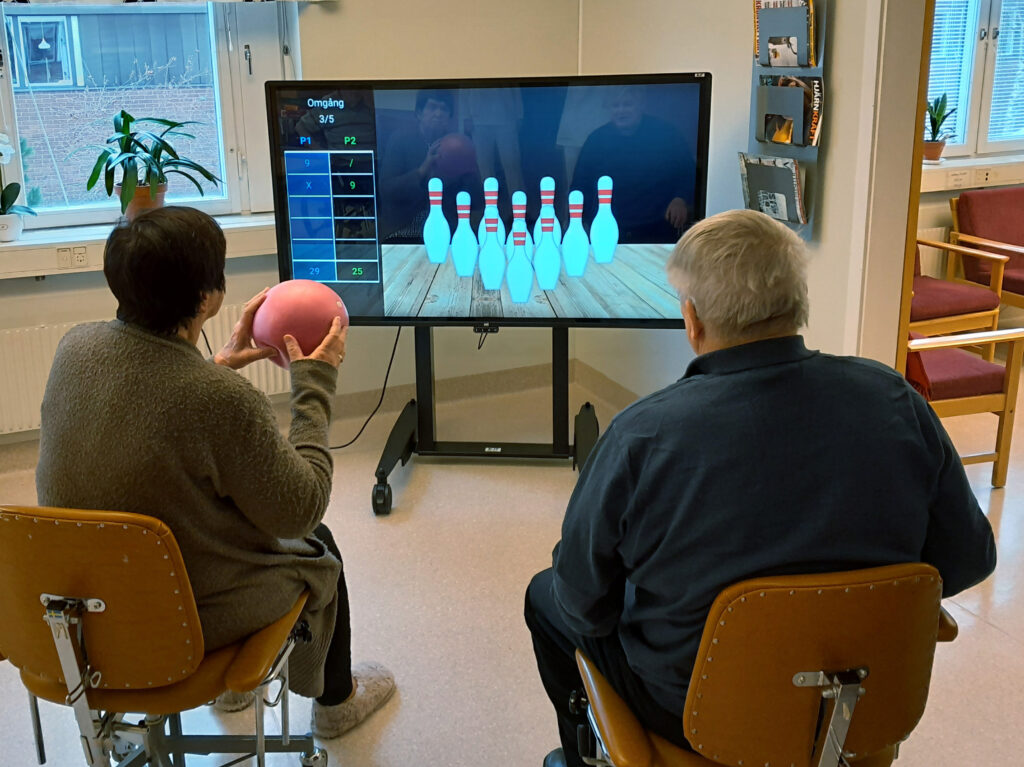
Moments of joy and new opportunities
The idea that a large touch screen could meet the needs of the visually impaired may initially seem surprising. However, Cindy explains that they use games with various colours and shapes in rehabilitation. These games especially help those with contrast problems, but Yetitablet can be particularly useful even when a patient has visual field loss, meaning a small part of the field of vision is missing on one side.
“By motivating the patient to carefully examine the entire screen of Yetitablet, they can concretely experience how part of their field of vision is missing and consequently notice things on the left or right that might otherwise go unnoticed,” Cindy explains.
Another example is a situation, where a player throws a soft ball towards a dartboard on a large screen. This type of activity might be impossible for a visually impaired patient if they were to try throwing a real dart towards the dartboard. However, through Yetitablet, activities unfold in a new way, offering experiences and opportunities that may not be possible with traditional methods.
Cindy tells of a patient with visual impairment who was very down due to her life situation:
“She was encouraged to come to us in hopes of feeling better. We played a game with colourful bubbles and shapes to lift his spirit. The client played for so long that eventually, fatigue started to set in, but this didn’t diminish her smile. On the contrary, while playing, she became refreshed and more engaged. The client became very motivated deciding to continue playing with Yeti on her next visit.”
Cindy also shares about another patient who insisted she couldn’t stand, considering it impossible.
“However, we decided to try starting a game with Yetitablet. Surprisingly, she stood up and played for several minutes. We even had to point it out to her. Eventually, I suggested she would sit down so she wouldn’t risk falling or feeling unwell. The patient responded with confusion, asking what I meant, as she hadn’t even been standing for very long. She was very satisfied and happy that she could indeed stand.”
Assistance in group rehabilitation and individual rehabilitation
In the outpatient rehabilitation at Kalix Hospital, in addition to emphasising exercise, the importance of personal relationships with patients is also highlighted. This helps build trust and joy in rehabilitation. Many participants in group rehabilitation feel that being in a group is extremely beneficial for themselves.
Cindy talks about group work in rehabilitation:
“Sometimes, we start the day by looking at the aquarium from the screen and discussing the appearance of different fish. We’ve also used the Google Earth app to explore where each participant in group rehabilitation lives and where they have travelled. This is a great way to stimulate conversation and activate group members. It’s especially beneficial when some patients feel low, but we want to encourage their participation. Last Christmas, we created a cosy atmosphere with Yeti and listened to Christmas music on YouTube.”
This brings up the question of how to identify what needs to be rehabilitated and which methods are most suitable for each individual. Cindy explains that every rehabilitation is a new challenge. Some may spend individual rehabilitation sessions for several hours, while others prefer to participate in group rehabilitation. Getting to know each patient as an individual and understanding their background takes time.
“Identifying problems, setting goals, and planning strategies to achieve them are essential. Understanding each individual’s motivation is crucial in rehabilitation, as some patients commit well and follow instructions carefully, while others may only participate by being present, which may still be sufficient for them,” Cindy clarifies.
Results in Rehabilitation
Here’s a great example that highlights how a creative approach to rehabilitation, focusing on motivation and fun, produces not only appreciation but also tangible results. In the outpatient rehabilitation at Kalix Hospital, many patients have reported that time flies by and how impressive achievements they have accomplished, which they wouldn’t have believed possible. Most group participants eagerly anticipate the next rehabilitation sessions in outpatient rehabilitation!
Furthermore, the collaboration between different departments of Kalix Hospital and the use of modern technologies in rehabilitation act as a model for the best practices in rehabilitation. Although Yetitablet is used in rehabilitation, it’s not solely for their use; it’s also used in other hospital departments on weekends and evenings.

